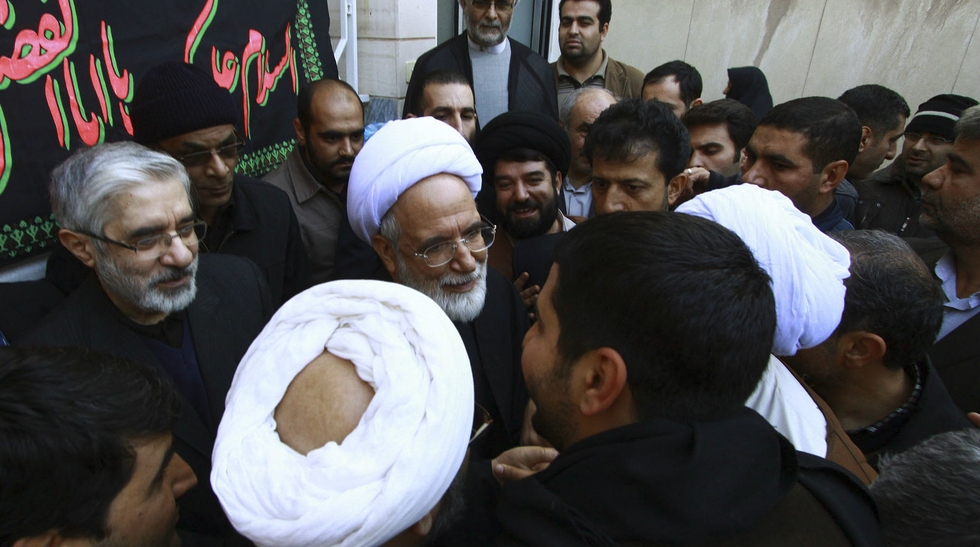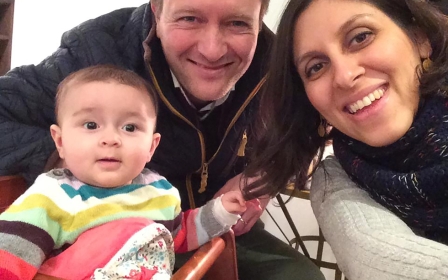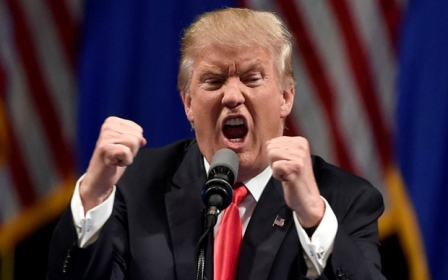Iran approves release of protest leaders Mousavi and Karroubi, family says

Iran's top security body has approved the release of opposition figures Mir Hossein Mousavi and Mehdi Karroubi, under house arrest for seven years for leading mass protests in 2009, a family member has told local media.
"I have heard that the decision to lift the house arrest was approved by the Supreme National Security Council," said Hossein Karroubi, son of the jailed reformist, according to the Kalameh news website, which is close to the family.
"This decision will be presented to the [supreme] leader so that this case can be concluded," he said, adding that Ayatollah Ali Khamenei would have 10 days to veto the decision.
There was no official confirmation of the decision, but Sunday's reports come at a time when Iran's leaders are keen to unite conservative and reformist factions to face down increasing pressure from the United States and a worsening economic crisis.
Mousavi, 76, and Karroubi, 80, were reformist candidates in the controversial election of 2009, which was won by Mahmoud Ahmadinejad.
They claimed the vote was rigged, triggering months of mass protests, particularly in Tehran. Hundreds of thousands took to the streets in the biggest challenge to the system since the Islamic Revolution of 1979.
The pair were placed under house arrest without trial in February 2011, along with Mousavi's high-profile wife, 66-year-old Zahra Rahnavard.
Hossein Karroubi said the security council had also agreed to lift restrictions on reformist figurehead Mohammad Khatami, who was Iran's president from 1997 to 2005.
The media had been banned from showing Khatami's face and strict limits were placed on his movements.
President Hassan Rouhani repeatedly vowed to seek the release of Mousavi and Karroubi, a major plank of his election in 2013 and re-election last year, with their names frequently chanted at his rallies.
But despite Rouhani chairing the Supreme National Security Council, which is made up of government and military figures appointed by the president and supreme leader, there had been no sign of progress on their release.
Currency woes
The news of the opposition figures' possible release came as Iran's currency hit a record low on Sunday of 100,000 rials to the dollar.
The unofficial rate stood at 102,000 rials by midday, according to Bonbast, one of the most reliable sites for tracking the Iranian currency.
The rate was confirmed by a trader who spoke on condition of anonymity to the AFP news agency.
The rial has lost half its value against the dollar in just four months, having broken through the 50,000-mark for the first time in March.
The government attempted to fix the rate at 42,000 in April, and threatened to crackdown on black market traders.
But the trade continued with Iranians worried about a prolonged economic downturn turning to dollars as a safe way to store their savings, or as an investment in the hope the rial will continue to drop.
With banks often refusing to sell their dollars at the artificially low rate, the government was forced to soften its line in June, allowing more flexibility for certain groups of importers.
The handling of the crisis was one of the reasons behind last week's decision by President Rouhani to replace central bank chief Valiollah Seif.
The currency collapse was encouraged by the US announcement in May that it was pulling out of the 2015 nuclear deal, that lifted certain sanctions in exchange for curbs to Iran's atomic programme.
The US is set to reimpose its full range of sanctions in two stages on 6 August and 4 November, forcing many foreign firms to cut off business with Iran.
Middle East Eye propose une couverture et une analyse indépendantes et incomparables du Moyen-Orient, de l’Afrique du Nord et d’autres régions du monde. Pour en savoir plus sur la reprise de ce contenu et les frais qui s’appliquent, veuillez remplir ce formulaire [en anglais]. Pour en savoir plus sur MEE, cliquez ici [en anglais].




